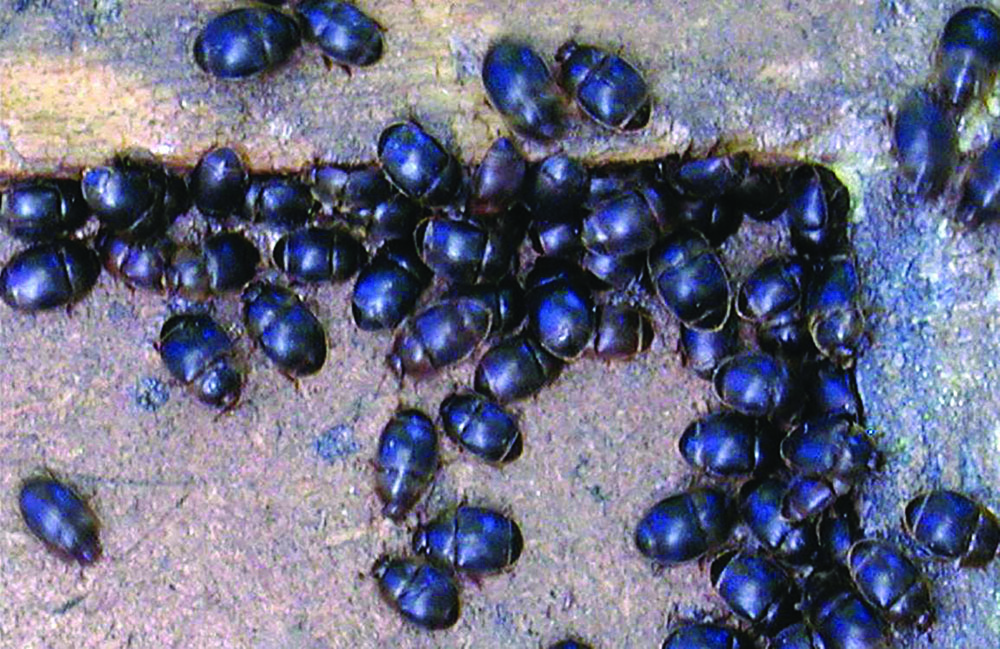by Jennifer Berry
While the frost still lingers here in the south (and the snow to our north), it’s time to take care of a few items on our beekeeping to do list.
To start, we are going to use these chilly temperatures to our advantage. Now’s the time to begin dealing with Small Hive Beetles (SHBs), because – depending on where you live – SHBs can either be a mild irritation or a major pest.
So, what exactly makes a pest a pest? Well, it’s always fun to search for definitions online. The one I enjoyed reading about the most really doesn’t apply to beekeeping, but I found it entertaining:
Pest: the guy at the party or club that tries to pick-up every woman in the place. He is usually drunk, smells, and has bad breath.
Hopefully this type of pest isn’t lurking in your apiary. If so, I’d suggest getting a big dog and a can of Raid! Haha.
Okay, seriously now, the actual definition that applies to us:
Pest: a destructive insect or other animal that attacks crops, food, livestock, etc.
In our situation, SHBs are destructive insects that attack bee colonies. By themselves, or even in groups of a few hundred, they aren’t such a problem. The problem begins when their populations get out of control. This is the case for most pests really.
Think about your yard, garden, or house: if there are a few spider mites on your azaleas, or few aphids on your tomatoes, or even a few ants in your kitchen, you don’t think much about it. A few weeks pass and you’re making a salad, so you head to the garden for some fresh produce. As you bend down to pick that beautiful, ripe tomato – BOOM! – it all comes into focus and you see thousands of aphids, white flies, hornworms – they’re attached to every stalk, leaf and bloom. You think, Crap! At this point, the plant doesn’t seem to be suffering too much, but you know from past experience that, if you wait another week, it’s sayonara for the ole Solanaceae species. Back to the house you go for a pair of gloves, a water hose and some soap. But, as you pass by your kitchen window, something catches your attention. Wait! What is that moving all over my kitchen? As you press your face into the window screen, those few ants you saw a while ago are now a few million, and the fruit you just placed in your grandma’s ceramic bowl is being consumed in front of your eyes. Oh, and that Azalea, nothing more than a skeleton of twigs and webbing.
In the beeyard, it’s even worse.
Have you ever seen what SHBs can do to a thriving colony? It’s not pretty! The first time I experienced these pests was when I was helping Dr. Jamie Ellis (at that time, he was just “Jamie”) on a project in South Carolina. Jamie wanted to see if a) one could trap beetles in the bee yard before they invaded a colony, and b) what type of material(s) you would need to do just that.
In preparation for his study, he spent days drilling holes into one-gallon buckets, gluing small plastic containers onto the bottom of the inside, and gathering up edibles he assumed beetles would find tasty. Once all the supplies were ready, we drove to the coast of South Carolina to a farmer who had hired a beekeeper to deliver several pallets of bees to pollinate melons. The beekeeper had never returned to collect his hives, and the farmer believed most of the colonies were in poor shape.
It was a typical Summer day when we arrived in South Carolina: cloudless, hot and humid. The field was encircled with tall privet hedges, kudzu and bramble. It provided good nourishment for the bees, but it absorbed any movement of air (causing the 95° to feel more like 125°). It had rained the night before, so we hiked to the hives to avoid getting stuck. As we approached the first pallet of bees, I noticed one of the hives had a purple stain running down the side of the supers (Figure 1). Upon closer inspection, we realized it was fermented honey oozing out of the super and down the side. The smell was horrible. A robust, complex mixture of something dead, with a hint of fermented, fruity sweetness, rounded out with some earthy tones and yuck to the third power! I’m sure you can imagine the scent.
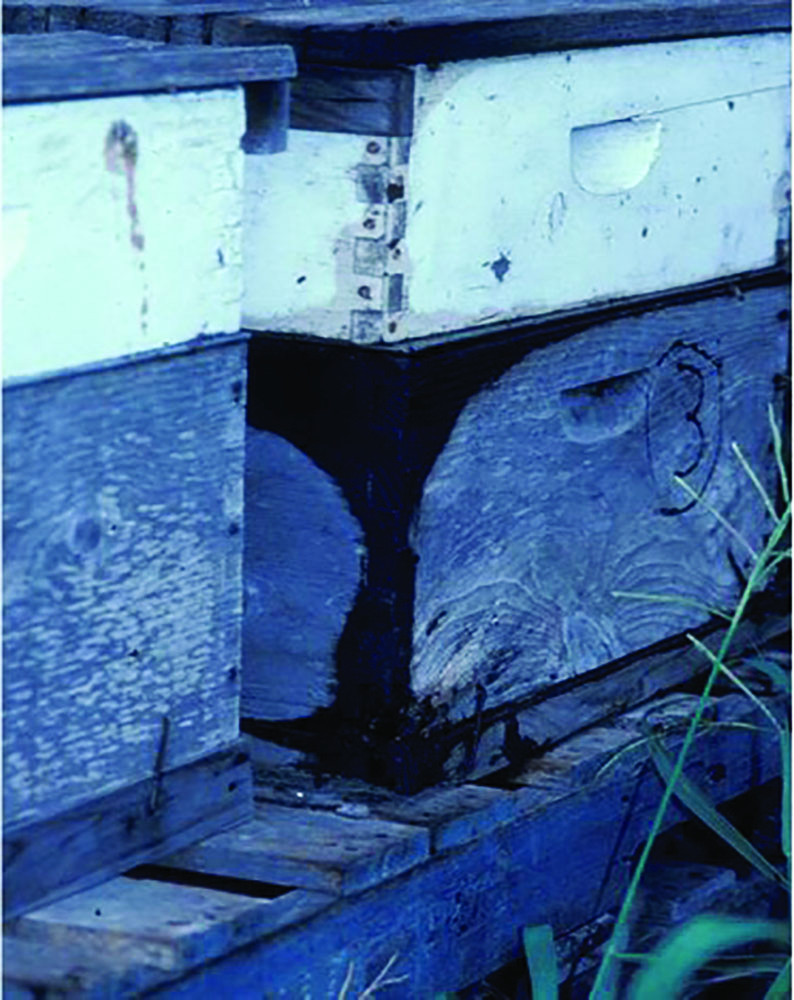
Figure 1 – Fermented honey foaming out of the colony.
The hive with the foaming ooze was dead. All that was left were thousands of beetle larvae wriggling in and out of cells, adult beetles running about, and slimed comb and equipment (Figure 2). The slime is created as the SHBs (adults and immatures) defecate after consuming brood, honey and pollen. This causes the honey to ferment, creating CO2, bubbles, which then boil out of the cells.
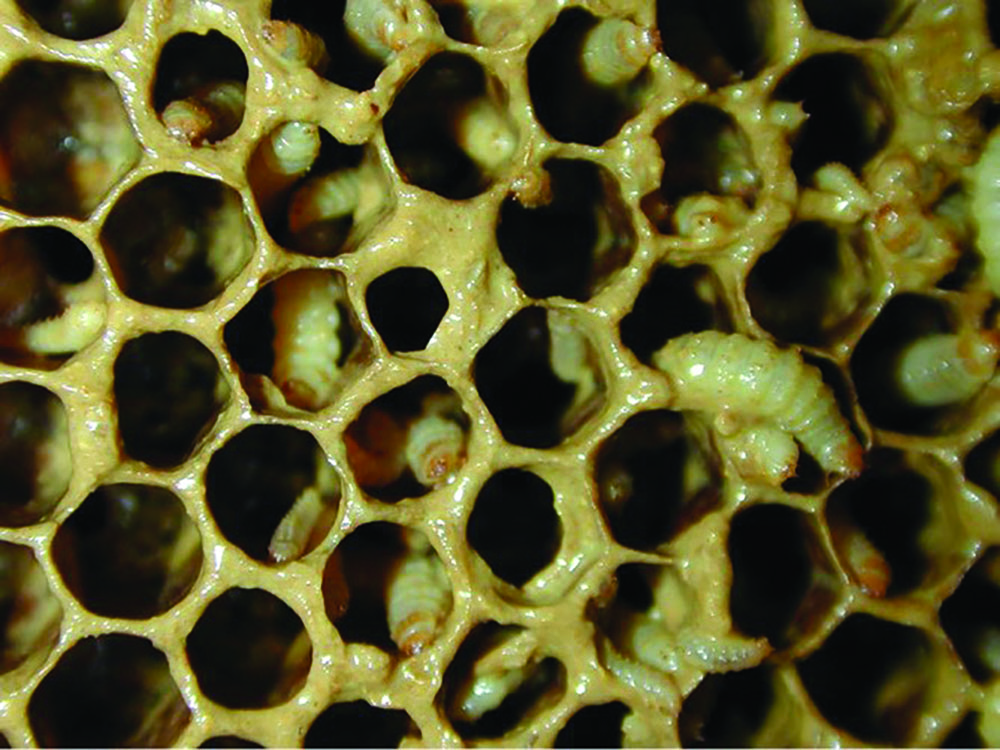
Figure 2 – Slimed wax comb from SHB activity.
The other three colonies were in horrible shape. One of the hives had all the bees clinging to the outside, because the interior resembled the oozing hive, complete with larvae and slime. It was sad to see all those bees trying to protect their home from the multitude of invaders – after fighting a hard battle, eventually giving up and being either pinned in the corner or hanging outside.
Our job that day was to collect as many adult SHBs as possible. We had our handheld aspirators (Figure 3), which, after using for about 15 minutes or so made you feel like passing out. So, after thousands of beetles were sucked out of the hives, it was time to sex them (determine which beetles were males and which were females). Yep, you can do this. Not something I talk about freely to strangers in the grocery line or anything, but a normal scientific process for the good of mankind (or bee-kind!). As we sexed the beetles, the females received a spot of pink fingernail polish on their backs, and the males would get a spot of blue.
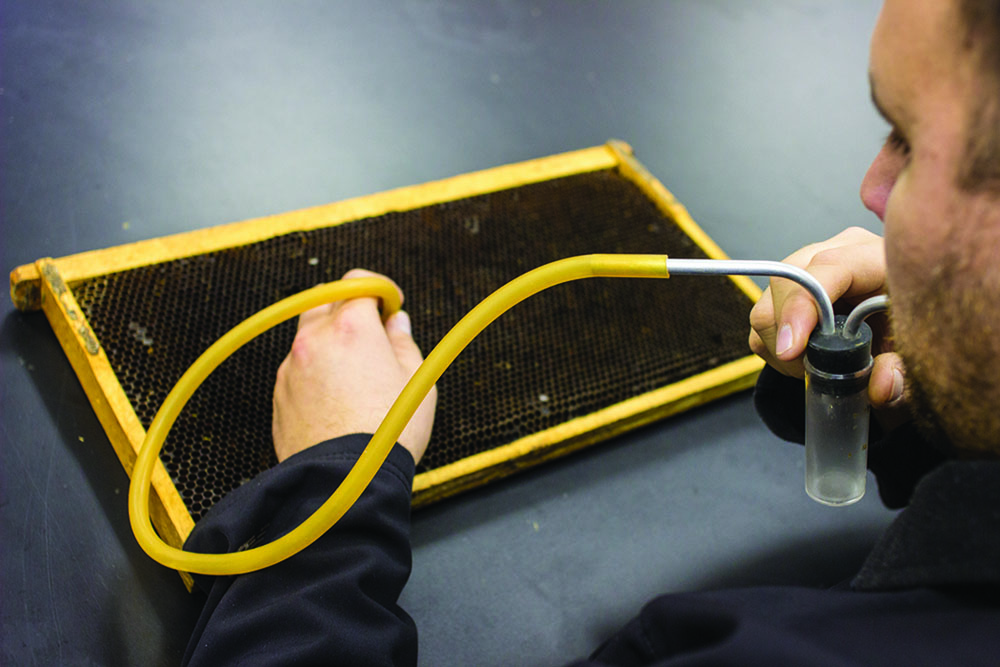
Hand held
aspirators work well for sucking up SHBs.
In the morning, we strung the traps in the trees and released the beetles to see a) which sex would arrive at the traps first, or b) would it just be a random gathering at the feeder bucket? We were just hoping for beetles in the buckets. We released the beetles and waited, waited some more, waited a bit longer, and, after a few hours – nothing. Not a single beetle was found in any of the traps. After spending all day in the heat sucking up beetles, and then all night painting them blue or pink – to say we were disappointed is an understatement. But, that’s research for you.
Anyway, the point of telling you all this is just how disgusting those hives had become because a few beetles had turned into a few thousand. Plus, this being my first experience with how devastating these beetles (pests) can be, it is forever ingrained into my memory.
What can we do now to keep SHBs from becoming PESTS?
First, move our colonies – especially the ones that are in the shade. SHB larvae love to develop in soil that’s not too dry or too hard. Ever compare soil types under a tree versus soil in the field? The soil in the shade is (obviously) protected from direct sun, plus it’s also getting that yearly layer of leaves – this all creates the perfect combination of soft, organic matter for SHBs to maneuver through and develop. If your colonies are in the shade more than half the day, it would be a good idea to move them into a sunnier location. I know this may be impossible for some of you whose only available apiary is in your backyard. We’ll get back to you in a minute.
Over time, SHBs not only take over colonies, but they also become permanent residents in our apiaries. It may take years, but it can happen – especially in moist, rich or sandy Southern soils. This past year, we had a colony that was leaning too far to the right. To keep it from tipping over, we moved it a few feet onto more level ground. As I was relocating the blocks that the hive was situated on, I disturbed the soil underneath. That’s when I noticed hundreds of white SHB larvae and pupae. WHAT? There shouldn’t be any beetle issues here! We had just gone through the entire colony (actually, all the colonies in that apiary) and saw SHBs here and there, but not to a degree that concerned us. And this particular colony had been fine. No SHB larvae, good brood patterns, a healthy population – but the evidence was lying buried in the ground. The more I scratched, the more immature SHBs I found. This particular colony was even in full sun most of the day, but the surface underneath the colony, in between the two blocks, was moist, dark, and nutrient rich with hive debris constantly dropping down from above. We moved a few more colonies, and, sure enough, MORE BEETLES!
After the work day was over, it was time to phone some seasoned beekeepers (Bob Binnie being one) and tell them what we found. Several responded that, in their experience, after a few years, the SHB populations rose in certain apiaries, no matter if they were in full sun or not. Therefore, these beekeepers would periodically vacate apiaries for a year or two to remove the food source and cut back on SHB populations. Made sense, but we didn’t have the luxury of moving out of our apiaries. Instead, we moved each individual colony over a few feet to expose the soil underneath. Next, we took our hive tools and scratched away the debris, exposing the immature SHBs to the sun. It did the trick. Over the next few months, we noticed a considerable drop in the number of adult beetles running around inside the colonies. This may work for those of you who have apiaries in the backyard and are unable to move to another location.
It’s important to remember that the sun is also doing a number on the immature stages. The SHB’s cuticle is unable to deal with UV light, so they die from exposure. We learned this one year when we came across frames with SHB larvae wriggling about. We had set them aside till we could finish working the apiary. When we came back to collect the equipment, the ones that were propped facing the sun had no living SHB larvae. Some were dead on the ground, but most were sticking straight out from the frame as if they had been zapped by some invisible alien ray-gun. The ones on the underneath side of the frame, however, were still alive. The difference between the two treatments: sun. Boy, this beats chucking nasty, slimed frames into the freezer (next to your pot roast? Gross!) or into buckets of water.
A word of caution here: even after the frames are exposed to the sun and the larvae are dead, you never want to put too many slimed frames back onto one single colony, especially a weak one. The smell can attract robbers, and the cells could possibly still have eggs tucked into crevices. It would be best to distribute slimed frames to several different strong colonies as opposed to giving them all to just one.
Now for you northern birds, remember this: SHB larvae and pupae can’t survive in northern soils during the Winter. The freeze kills them. Hence, no need to move your colonies over a few feet. Any SHB immatures in the ground up there have long since met their demise. This Summer, however, would be a great time to move them – especially if you are seeing beetles scurrying about.
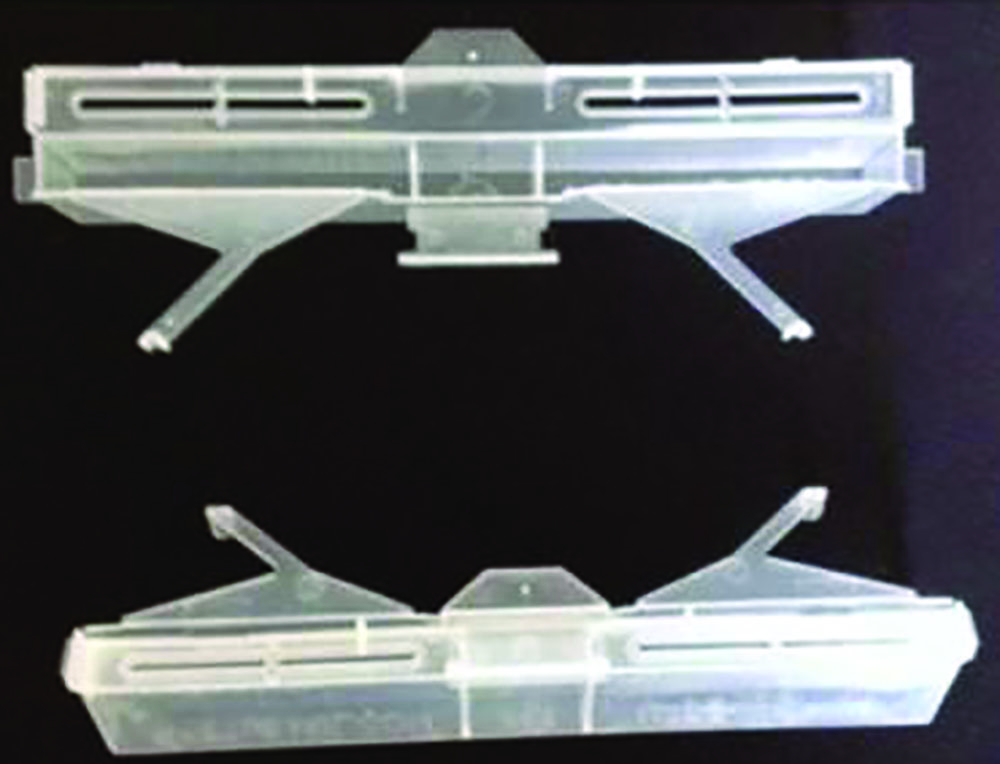
Small Hive Beetle trap.
One more thing we do this time of year – after we have moved the colonies – is place beetle traps next to the cluster. SHBs need the warmth of the bees in order to survive during the cold months – they can’t do it on their own. Placing these traps won’t eliminate all the beetles, but it’s all about keeping these critters from becoming pests. The traps we use at the lab are the Beetle Jail in-hive traps. There are three compartments – the center compartment is inaccessible to the beetles (also to the bees). We fill the center section with some moistened pollen substitute, which hopefully acts as a bait to draw the beetles close to the trap. The beetles then enter either of the other two chambers (which we fill with oil) to hide from the bees and then die. It’s funny though – you’ll open one hive to pull out the trap and it is so full of beetles, not another one could possibly squeeze its way in. Then, you open the colony next door and their traps are empty. Unpredictable little pests are the worst!
March can be a busy month for the bees and beekeepers – especially here in the south. Luckily, with colder temperatures still lingering about, moving colonies doesn’t have to happen in the dark. This is a good thing – no, an awesome thing, actually! All we need to do is get out in the morning after that cup of coffee (and before the bees start flying), close them up, strap them down, and move away. This will hopefully reduce a few pests and help our bees live healthier lives.
Enjoy the Spring, but keep an eye to the sky, it may soon be filled with thousands of swarming girls. Take care of you and your bees!
Jennifer Berry is the Research Leader at the University of GA Bee Lab.






